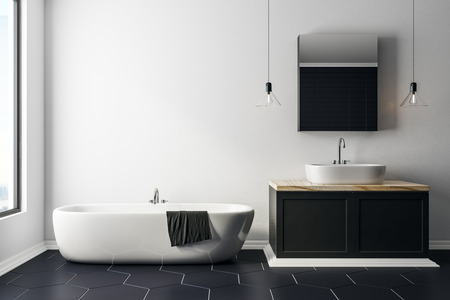Key Differences Between Ceramic, Glass, and Stone Tiles
If you have ever visited a flooring showroom, you will notice how inspiring and beautiful tile’s design element can be. With numerous spectacular displays, there are literally hundreds of different options and designs, all at various price points. But before you make your purchase, it is important to know what types of materials are available to you and the key differences in tile products. To help, here is the lowdown on a few popular types of tile.
Glass

Glass tiles consist of really thin pieces of glass that are usually sold independently or in a mosaic-form, supported with a mesh material. Additionally, glass tiles are more colorful than other tile options. They are reflective and are ideal for backsplashes and walls.
Glass tile can create a really beautiful look, but it can be more expensive. Additionally, since glass is transparent, the adhesive can be visible through the material. That is why it requires installation from a flooring contractor to achieve the best, most flawless results.
Ceramic

Ceramic tiles are produced from a mixture of water, clay, which is then heated at high temperatures. Most ceramic tiles are treated with a liquid coating that is heated under high temperatures to make it really durable. It is also considered more affordable, and you can purchase ceramic products in a variety of colors and patterns.
Stone

Stone tiles tend to be more expensive than most flooring products since stone tiles are handmade from natural materials. You will find that stone products typically have unique and bold patterns or designs. Additionally, when installing stone tiles, they must be sealed since they are prone to etching when encountering to harsh products.
Do you want to learn more about one of the tile products we discussed? If so, do not hesitate to call or visit us for more information. One of our expert sales associates would love to assist you. Thanks for reading!
